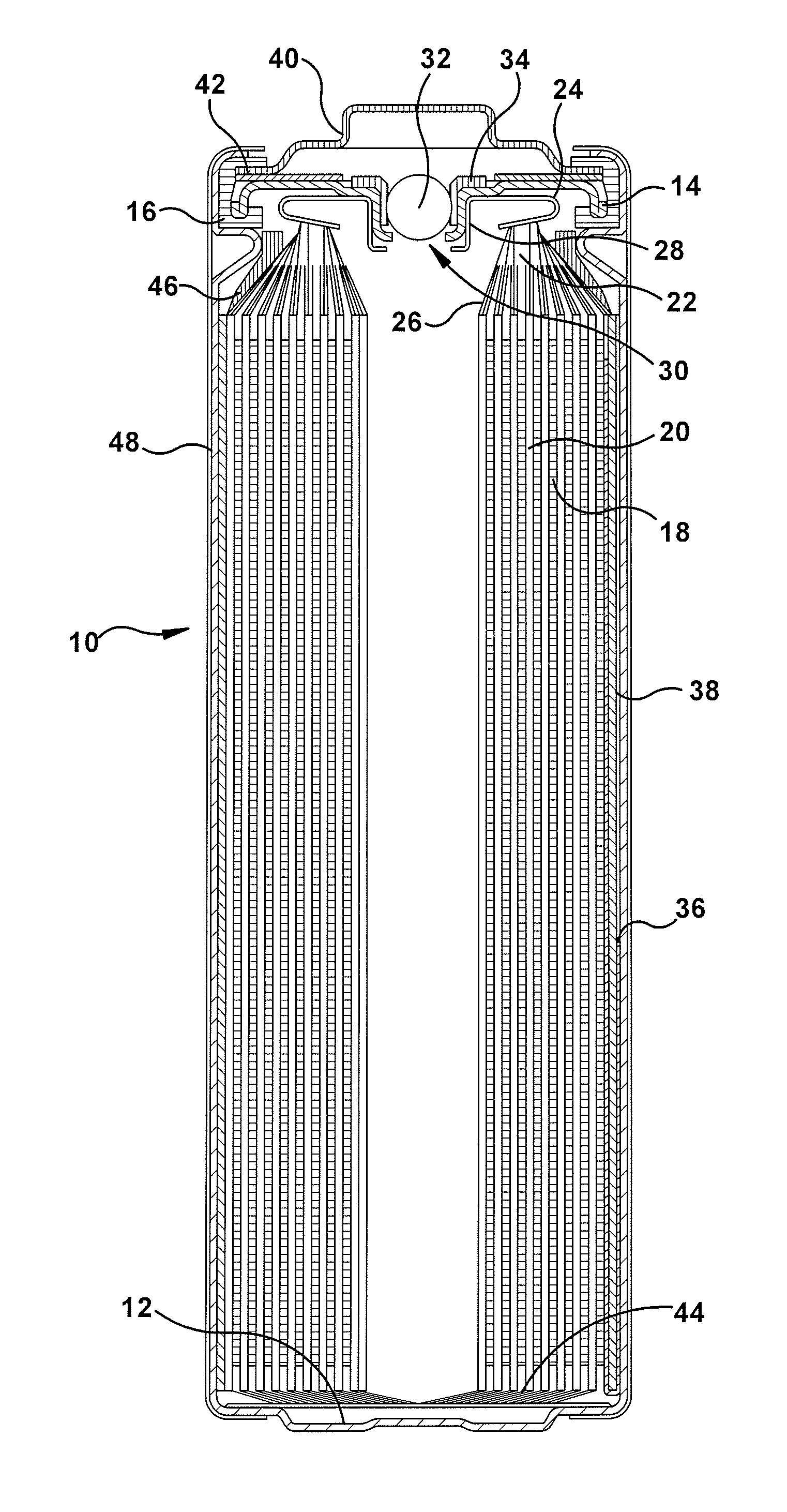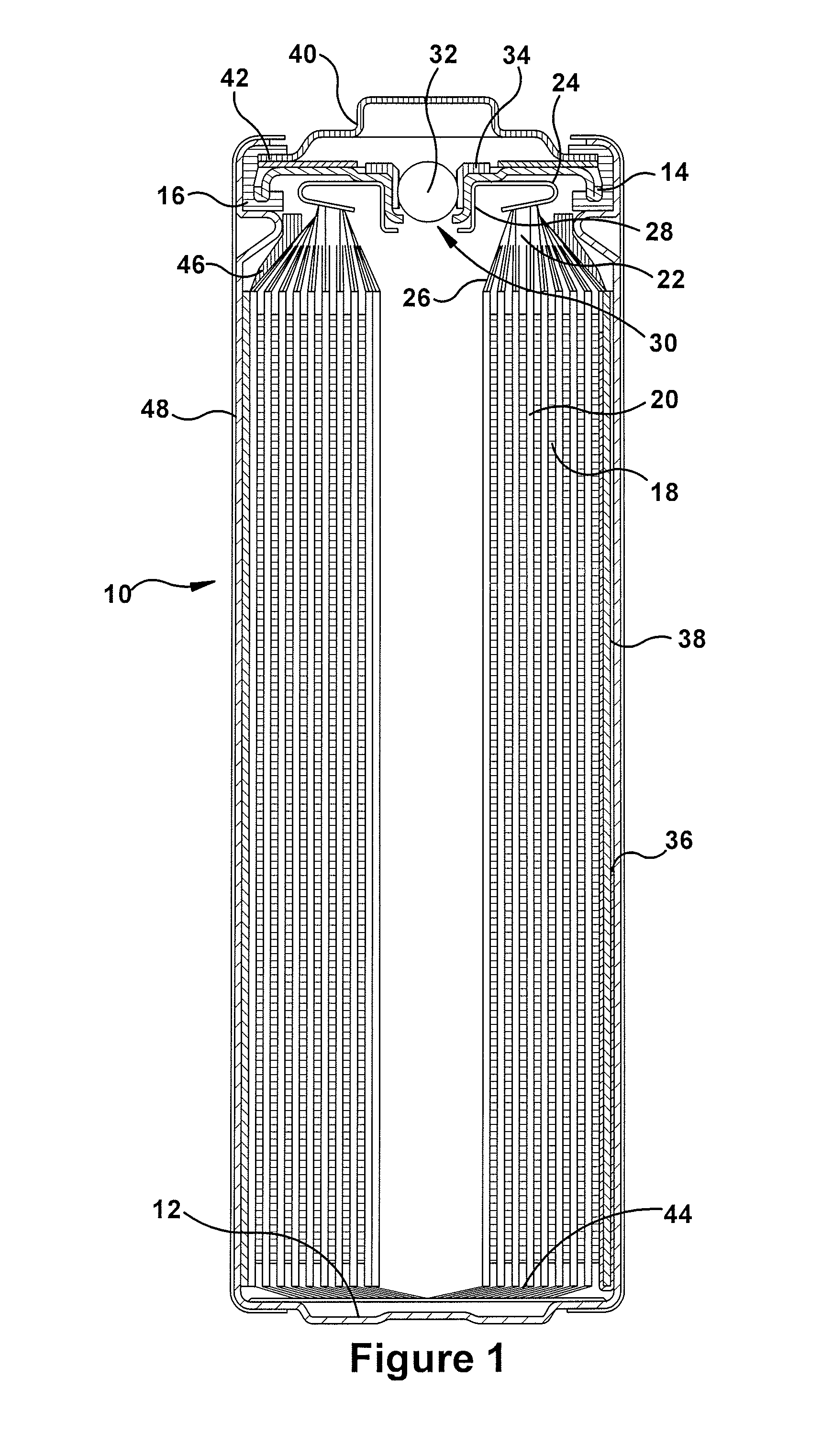However, many of the historically-used
primary battery chemistries (e.g., carbon
zinc, alkaline, etc.) are not ideally suited for such high power applications.
Furthermore, the need for specified nominal voltages significantly limits the selection of potential electrochemical materials, while the use of standardized cell sizes restricts the overall available internal volume available for active materials, safety devices and other similar elements and features typically required for
consumer products.
These issues lead to very different approaches in terms of selection of internal materials and / or compatibility with containers and closures as compared to non-aqueous systems.
In rechargeable 1.5 V systems (note that lithium-
iron disulfide systems are not currently considered suitable for
consumer-based rechargeable systems), various highly specialized components and electrochemical and / or
electrolyte compositions are used to best accommodate lithium
ion charge /
discharge cycling.
Here, such high cost components are not a key design concern because secondary systems typically sell for a higher retail price than their
primary battery equivalents.
Ultimately, the
discharge mechanisms, cell designs and safety considerations are, by and large, inconsequential and / or inapplicable between primary and secondary battery systems, and even among primary systems, it is difficult to adopt or interchange cell designs, materials' selections and the like.
For example, in 1.5
volt lithium-iron disulfide primary batteries, a discontinuity in the
anode (which does not have an embedded
current collector running along its entire length) can lead to a loss in the overall expected capacity of the battery.
However, these safety and reliability elements occupy internal volume and / or require design principles that can be counterproductive to cell
internal resistance, efficiency and overall
discharge capacity.
Another challenge unique to lithium-iron disulfide systems relates to the fact that its reaction end products occupy substantially more volume than the original inputs, which leads to swelling of the electrode
assembly as the battery discharges.
In turn, this swelling can cause unwanted bulging (or, in extreme cases, splitting) of the cell container.
The increased force within the electrode stack may also lead to short circuits if the separator is compromised and / or
anode disconnects which reduce the amount of capacity actually delivered by the battery.
However, thicker inactive materials limit the internal volume available and thicker, more rugged electrodes accommodate fewer winds in the jellyroll, resulting in less surface area between the electrodes and comparatively lower battery performance at higher drain rates.
For example, a possible solution for problems created by swelling, disclosed in U.S. Pat. No. 4,379,815, is to balance
cathode expansion and
anode contraction by mixing one or more other active materials (such as CuO, Bi2O3, Pb2Bi2O5, P3O4, CoS2) with
pyrite, although these additional materials can negatively affect the discharge characteristics of the cell, and the capacity and efficiency of the overall cell may also suffer.
To the extent some of these solutions remove volume that could be occupied by active material in the battery, these solutions would not necessarily improve the battery's overall discharge capacity.
For example, if the design provides inadequate thickness in the anode or the
cathode current collector then the radial forces during discharge may compress the jellyroll to such a degree so as to cause a disconnect in one or both electrodes and, once this disconnect occurs, the battery may cease to deliver capacity regardless of whether the active materials have all been discharged.
Similarly, the selection of inactive components, such as solvents, solutes, binders, conductors, polymers and the like, must necessarily be made in context of the exigencies of the situation, and isolating single items from an extensive
list of possibilities is not by itself sufficient reason for an artisan to consider using in that particular combination.
 Login to View More
Login to View More 


